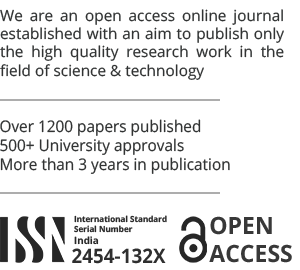Indoor Localisation Using RSSI Technique
Published by: Ramya .B, Saranya .N, Jyotsna .M, Hardhika Mahavir, Senthil Kumar
Full DetailsAdvanced Foot Step Power Generation Using Piezo-Electric Sensors
Published by: Anirudha Chavan, Shyam Lakhadive, Vaibhav Pondhe, Prof. Vineeta Philip
Full DetailsEnergy Efficient Electric Vehicle Using Regenerative Braking System
Published by: N. Dheepika Lakshmi, D. Pooja Kanwar, Sandhyaa. R, S. Lakshmi Priya
Full DetailsImplementation of Virtual Human for Military Application
Published by: Priyanka .C, Sanjana .S, Ramya P. S, Akilandeswari .M, Priya .G
Full DetailsA Case Study: Ways And Means to Measure and Reduce ATC Losses in Distribution Systems
Published by: S. R Shankar, Dr. N. Kamaraj
Full DetailsSelf-Concept and School Adjustment of Children with Learning Disability
Published by: Dr. Priyanka Pandey
Full Details
